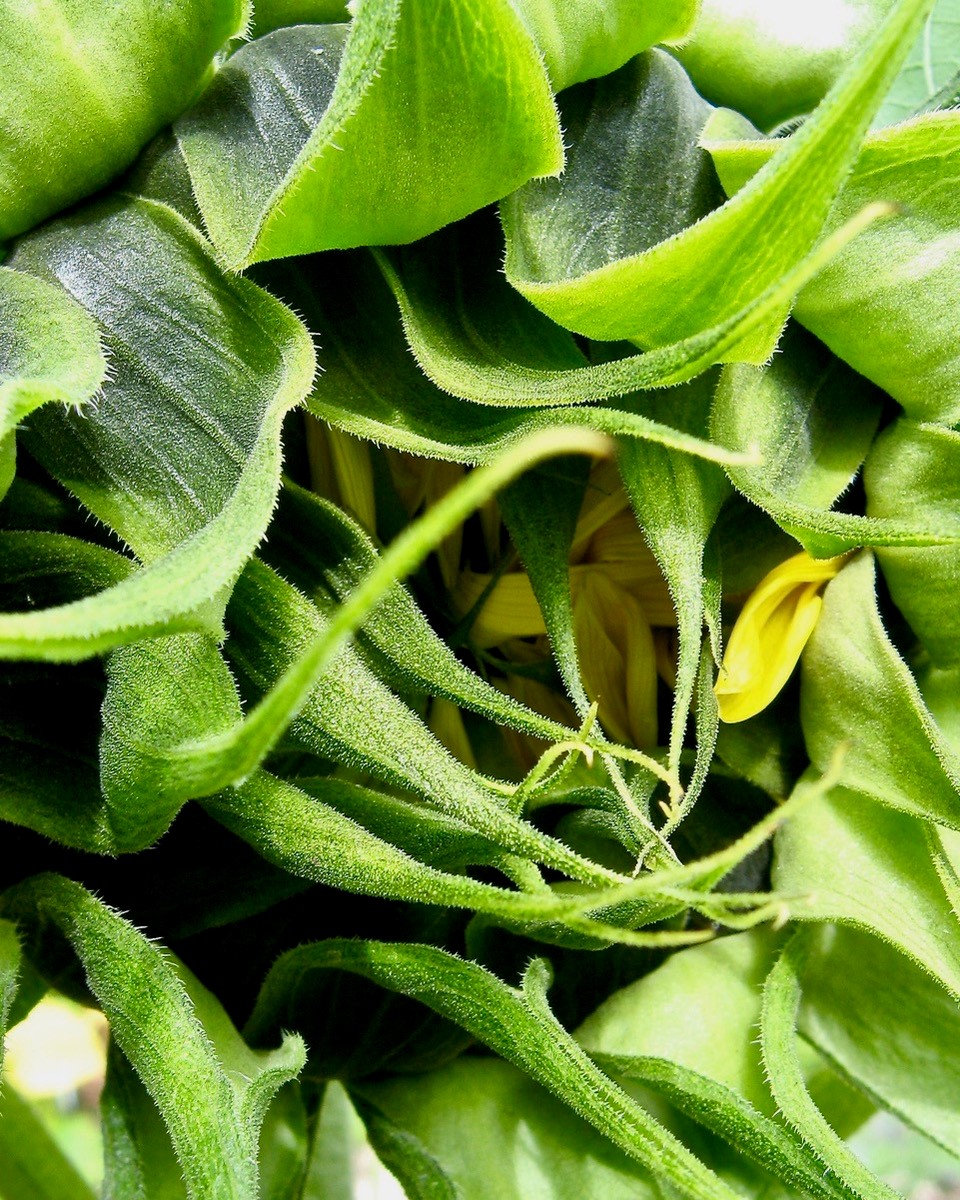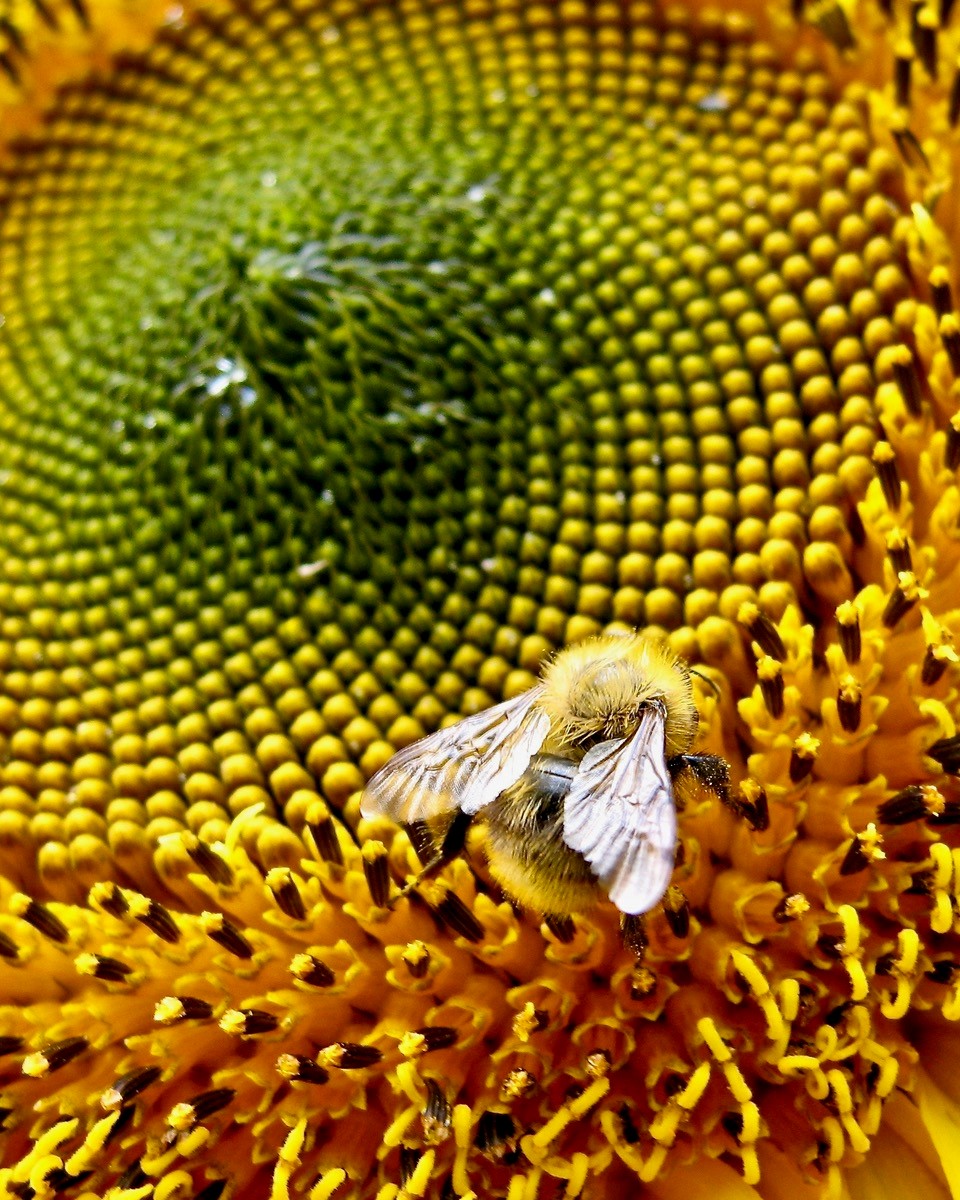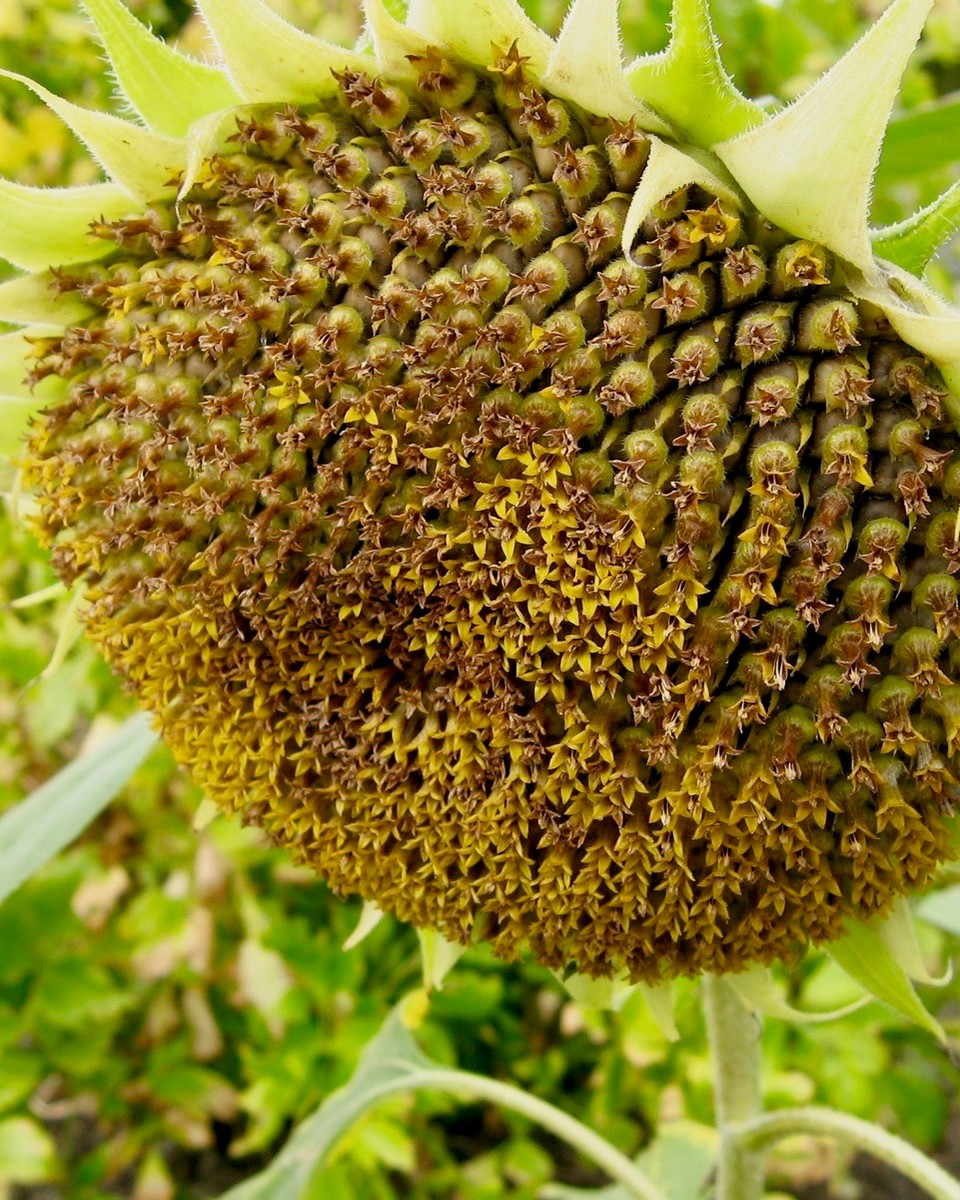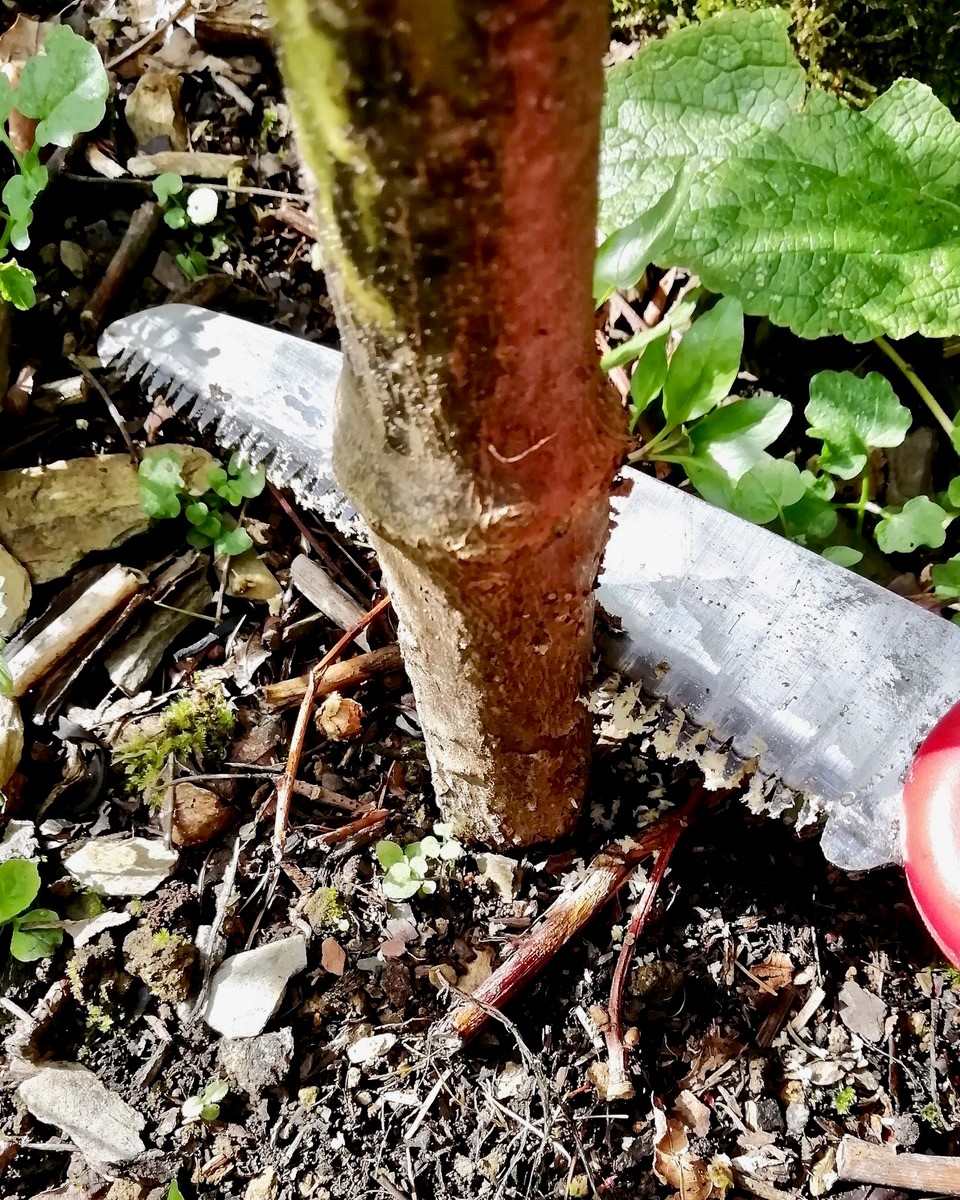Sun’s up: as summer fades, these solar-powered stalwarts reach their zenith.
Sunflowers are my September saviours. As autumn starts to win the tug of love with summer, I’m drawn to these tall, slightly improbable-looking, reach-for-the-sky flowers every bit as much as the clouds of bees, drone flies, hoverflies and pristine red admiral imagos. These tough, easy-to-grow annuals will keep late summer – or its echo, at least – on life support for several weeks yet, offering up pollen and nectar for soon-to-be-hibernating insects, and season-bridging cheer for us as dark, pandemic-beleaguered nights edge near. Nosh for seed-eating birds follows later.

Our giant sunflowers have been through the mill this year, beginning with an exceptionally dry spring spell, before being bowed by summer storms and then shredded by August hail. But, with the aid of some bracing and splint-like hazel poles, they made it. And I’m glad they have, because otherwise I wouldn’t be able to bestow my Most Useful Plant Ever Award (MUPEA) on them – an honour they win, unopposed, every year.
Big, easy-to-sow sunflower seeds will germinate in an unheated greenhouse, in a warm room, or outdoors in spring or early summer; the earlier you sow, the bigger the plants and their blooms will be. Sunflowers spend much of the summer putting down deep, anchoring roots and gently gaining height, before they eventually start to form their discs of yellow delight.

Being slug-besieged here in spring, I need sunflowers to get off to a winning start, so I sow two seeds per 9cm pot of quality peat-free compost, nip out the weakest seedlings, and pot them on into 10-12.5cm pots, aiming for young plants about 60cm tall before planting them out. Bigger plants are more likely to fend off slugs and snails, but they will need moving into 15-20cm pots – which means more compost and heaps more watering on sunny days. If you garden in slug-free bliss, seeds can be sown straight into the soil outdoors (don’t leave any lying around to tempt mice and voles).
In the ground, sunflowers are pretty much self-reliant, soon sending down roots for up to 1.5m; they pump up nutrients from deep down, and improve heavy soils by giving them a crumblier structure. My biggest soil-life-boosting tip is to never pull them up. I gave mine a weekly soaking drink during spring’s dry spell, and then they were on their own.
From the moment sunflowers are planted, the only way is up. Giant sunflowers – tall varieties with just a single bloom – have a relatively small ‘footprint’ on the ground (meaning that lower-growing plants will grow happily beneath them), but they let rip upwards into unlimited vertical growing space, with no competition. They can look good scattered through or grouped together in a border, adding late summer loftiness, or can be grown in regimented rows to make an ephemeral allotment boundary. They’re strong enough to support a late sowing of climbing beans, provided you time it so that the beans don’t overthrow the developing stem. If you grow thick-stemmed ‘Pike’s Peak’, or ‘Sunzilla’, with its up to 60cm-wide heads, expect to crick your neck gazing up at these whoppers, which reach 3-4m tall; be ready to bolster them with a sturdy stake, too. A single plant will become the focus of even a tiny garden in late summer; your neighbours won’t be able to miss it.

My plants taunted me for a few midsummer weeks: it was all big green leaf after leaf, with no hint of a flower bud. But then, just when I’d decided that climate-driven hiccups might have knocked them off kilter, the coy, tightly wrapped green heads began to appear. I was as relieved to see their glowing hearts unfurling as the bumblebees were. Now they’re a pollen and nectar fly-thru, and provide landing pads for dragonflies, damselflies and seed-eyeing goldfinches. The hairy leaves frame gossamer webs, and I’m even letting slugs rasp at their thick green stems.
September’s slide into October will see the fattening heads nod, and fade from yellow to gold to brown as the big seeds swell. And then I have a choice: leave them intact for the goldfinches, greenfinches, siskins, tits and sparrows to find and feast on as the seeds ripen – or cut the heads and keep them dry in the greenhouse, out of the reach of voles and mice, to put out later on when cold snaps strike (dried flower heads make impressive indoor decorations, but evict any earwigs first). If I leave a few and behead the rest, I can turn their long, strong and straight stems into ultra-local home-grown plant supports. Cut and dried in the greenhouse (an airy garage, or strung up under dry eaves, works too), they’re light in weight but sturdy enough to support anything from Brussels sprouts to cordon tomatoes to runner beans. I’ll be keeping some by to help bolster next year’s giants against our increasingly tempestuous summer storms…

Instead of pulling sunflowers up, I cut the stems off at soil level (using loppers or a saw), leaving the solid clump of roots in place; causing no upheaval of the underground ecosystem suits my no-dig beds. As the roots slowly rot, earthworms slink along the channels they’ve formed, while microbes, fungi and other soil-dwelling critters move in to feast, and the soil gets a boost of humus. On heavier soils, the channels left by decaying roots helps to improve drainage.
Laid horizontally and criss-crossed on the ground, sunflower stems make an excellent base on which to build a compost heap; they keep its base open, letting in air and creating voids where wildlife, such as hibernating hedgehogs and slow worms, can stow away. Any stems you can’t find a use for can be shredded to make a chunky, long-lived mulch, or an addition to an autumn compost heap or bin, where their pithy nature helps to keep the mix well aerated. Winter-sodden, seed-stripped heads can go into the compost too.
Fabulous, long-lasting refuelling stations for insects. Dead easy to sow and no fuss to grow. Thick clumps of deep, soil-boosting roots. Versatile and made for vertical gardening. Cobweb supports. Nutritious autumn and winter food for birds and small mammals. Rugged, blend-in-with-anything plant supports. Mighty mulch and compost-making manna. Eccentric, beautiful bringers of big-headed joy.
If you can think of another plant that’s worthy of my MUPEA, let me know.
Text and images © John Walker
Find John on Twitter @earthFgardener


